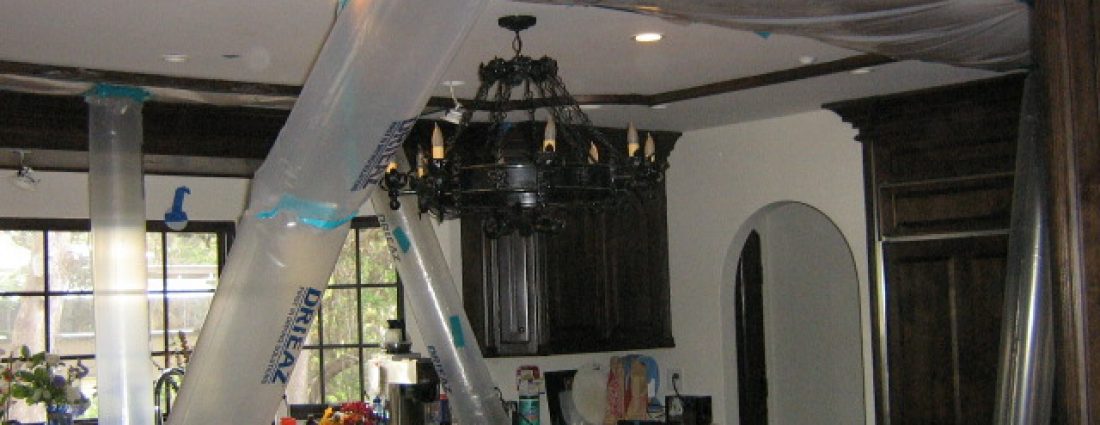Water damage on a ceiling is a nightmare for homeowners. If not fixed, it can cause serious problems like structural damage and mold. The first thing to do is find and fix the leak.
Prompt action is key to avoid more damage. Homeowners need to act fast to limit the damage and stay safe. Fixing ceiling water damage means checking how bad it is and what repairs are needed.
Key Takeaways
- Identify and stop the source of the leak immediately.
- Assess the extent of the damage to determine the necessary repairs.
- Act quickly to prevent further damage and possible safety risks.
- Consider hiring a Montery professional for ceiling water damage repair.
- Ensure all repairs are done to prevent future problems.
Understanding Ceiling Water Damage in Montery, CA
It’s key to know why ceiling water damage happens to fix it right. Ceiling water damage comes from many places. So, finding where the leak starts is very important.
Common sources of ceiling leaks include in Montery:
- Overflowing sinks, toilets, bathtubs, or showers
- Appliances with faulty water supply or drain lines
- Leaky pipes
- Clogged gutters
- Damaged, raised, or missing shingles
Using Moisture Meters and Visual Inspections in Montery, CA
To tackle ceiling water damage, you need to find the leak’s source. This is done by visual inspections and moisture meters.
Visual inspections look for water damage signs like stains or warping. Moisture meters check the ceiling’s moisture levels. This helps find where the leak is.
The steps to use these methods are:
- Do a detailed visual check of the ceiling and nearby areas.
- Use a moisture meter to find high moisture spots.
- Find the leak’s source based on what you see and the meter shows.
Knowing why ceiling water damage happens and using the right tools helps. Homeowners can then start water damage restoration and ceiling water leak repair. This fixes the stains and stops future problems.
Can You Fix Water Damage on a Ceiling in Montery, CA?
Ceiling water damage can be stressful for homeowners. But, there are DIY ways to fix it. The key is to act fast and follow the right steps to dry, repair, and paint the ceiling.
To start, dry the ceiling well. Remove a section to let air in and speed up drying. Using a fan can also help dry it faster. Make sure it’s dry before fixing it to avoid more damage or mold.
Repairing and Painting the Ceiling in California
When the ceiling is dry, remove and replace damaged parts. This means taking out the bad drywall and putting in new one. It’s important to match the new drywall to the ceiling for a uniform look.
After fixing the drywall, repair and paint the ceiling. Apply joint compound to seams and screws, then prime and paint. Choosing the right paint and applying it right is key for a professional finish.
If DIY repairs seem too hard or the damage is big, get help from a ceiling water damage contractor or ceiling water damage specialist. They can help ensure the repairs are done right.
By following these DIY steps and being careful, California homeowners can fix ceiling water damage. For complex issues or help with how to repair ceiling water damage, getting professional help is wise. It ensures a lasting fix.
Conclusion: When to Call Professionals and Prevention Tips
For minor ceiling water damage, DIY repairs might work. But, for more serious issues, it’s wise to call a professional. They can fix the damage right and safely. Montery experts in ceiling water damage repair can also prevent future problems.
Preventing ceiling water damage starts with regular checks. Look for leaks, rust, or wear on pipes and roofs. Taking care of these can save you from costly repairs later on.
If the damage is big, get help from the best ceiling water damage repair service. They have the tools and know-how to make your ceiling good as new. This ensures your home stays safe and healthy.
Rapid Recovery with Disaster Kleenup Specialists
From water and fire damage to mold and storm cleanup, Disaster Kleenup Specialists delivers fast, professional restoration when you need it most. Available 24/7 with expert care and free assessments. Don’t wait—call now to rebuild with confidence!

